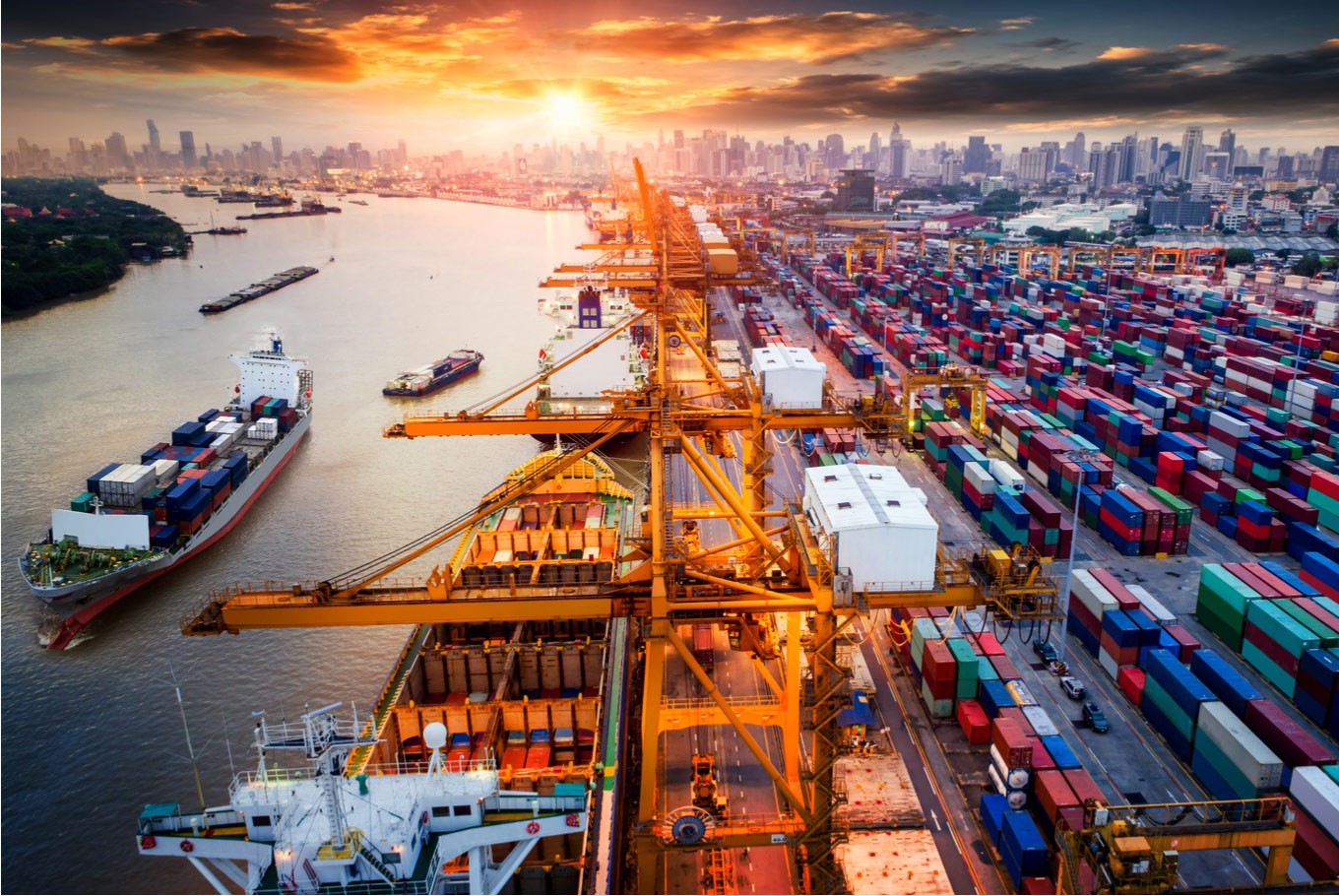⭐️ គន្លឹះសំខាន់
– អត្រាប្តូរប្រាក់សំដៅលើតម្លៃដែលរូបិយប័ណ្ណមួយអាចប្តូរទៅរូបិយប័ណ្ណមួយផ្សេងទៀតនៅក្នុងទីផ្សារប្តូរប្រាក់។
– ប្រភេទនៃអត្រាប្តូរប្រាក់មានពីរប្រភេទគឺ អត្រាប្តូរប្រាក់ថេរ និងអត្រាប្តូរប្រាក់អណ្តែត។
– អត្រាប្តូរប្រាក់មានសារៈសំខាន់ណាស់ ព្រោះវាដើរតួយ៉ាងសំខាន់ក្នុងពាណិជ្ជកម្មអន្តរជាតិ ដែលមានឥទ្ធិពលលើការប្រកួតប្រជែងនៃទំនិញ និងសេវាកម្មនៅក្នុងទីផ្សារពិភពលោក។
– វិធីសាស្រ្តព្យាករណ៍ទាំងនេះ (ការវិភាគបច្ចេកទេស, ការវិភាគជាមូលដ្ឋាន និងការវិភាគសន្ទស្សន៍អារម្មណ៍ទីផ្សារ) គឺជាឧបករណ៍សំខាន់សម្រាប់អាជីវកម្ម និងអ្នកវិនិយោគដែលស្វែងរកការសម្រេចចិត្តប្រកបដោយការយល់ដឹងនៅក្នុងទីផ្សារប្តូរប្រាក់បរទេសដែលមានថាមពល។
– ទំនាក់ទំនងរវាងអត្រាប្តូរប្រាក់ និងពាណិជ្ជកម្មអន្តរជាតិ។
⭐️ ឈ្វេងយល់ពីអត្រាប្តូរប្រាក់
អត្រាប្តូរប្រាក់សំដៅលើតម្លៃដែលរូបិយប័ណ្ណមួយអាចប្តូរទៅរូបិយប័ណ្ណមួយផ្សេងទៀតនៅក្នុងទីផ្សារប្តូរប្រាក់។ អត្រាប្តូរប្រាក់មានសារៈសំខាន់សម្រាប់ពាណិជ្ជកម្ម និងហិរញ្ញវត្ថុអន្តរជាតិណាស់ ដោយសារតែវាជួយកំណត់តម្លៃទំនិញ និងសេវាកម្ម ក៏ដូចជាផលចំណេញនៃប្រតិបត្តិការនីមួយៗពីប្រទេសមួយទៅប្រទេសមួយ។
⭐️ សារៈសំខាន់នៃអត្រាប្តូរប្រាក់
អត្រាប្តូរប្រាក់មានសារៈសំខាន់ណាស់ ព្រោះវាដើរតួយ៉ាងសំខាន់ក្នុងពាណិជ្ជកម្មអន្តរជាតិ ដែលមានឥទ្ធិពលលើការប្រកួតប្រជែងនៃទំនិញ និងសេវាកម្មនៅក្នុងទីផ្សារពិភពលោក។ អត្រាប្តូរប្រាក់ក៏មានឥទ្ធិពលលើលំហូរមូលធន ការសម្រេចចិត្តវិនិយោគ និងអាចជះឥទ្ធិពលដល់ស្ថិរភាព និងកំណើនសេដ្ឋកិច្ចទាំងមូលរបស់ប្រទេសមួយបានផងដែរ។

⭐️ ប្រភេទនៃអត្រាប្តូរប្រាក់
– អត្រាប្តូរប្រាក់ថេរ៖ នៅក្នុងប្រព័ន្ធអត្រាប្តូរប្រាក់ថេរ រដ្ឋាភិបាលបង្កើត និងទ្រទ្រង់អត្រាប្តូរប្រាក់ជាក់លាក់មួយសម្រាប់រូបិយប័ណ្ណរបស់ខ្លួន ជាធម្មតាទាក់ទងនឹងរូបិយប័ណ្ណផ្សេងទៀត ឬទ្រព្យសម្បត្តិដ៏មានតម្លៃដូចជាមាស។ គោលបំណងចម្បងនៃការបង្កើតអត្រាប្តូរប្រាក់ប្រភេទនេះ គឺដើម្បីរក្សាស្ថិរភាពក្នុងពាណិជ្ជកម្មអន្តរជាតិ និងលំហូរមូលធននៅក្នុងប្រទេស។
– អត្រាប្តូរប្រាក់អណ្តែត៖ អត្រាប្តូរប្រាក់ប្រភេទនេះត្រូវបានកំណត់ដោយទីផ្សារឯកជនតាមរយៈការប៉ាន់ស្មាន ការផ្គត់ផ្គង់ និងតម្រូវការ និងកត្តាផ្សេងៗទៀតនៅក្នុងទីផ្សារប្តូរប្រាក់បរទេស។ ម្យ៉ាងវិញទៀត អត្រាប្តូរប្រាក់ប្រភេទនេះត្រូវបានគេហៅថា អត្រាប្តូរប្រាក់អណ្តែត ឬអត្រាប្តូរប្រាក់ឥតគិតថ្លៃផងដែរ។
⭐️ កត្តាដែលជះឥទ្ធិពលលើអត្រាប្តូរប្រាក់
អត្រាប្តូរប្រាក់ត្រូវបានរងឥទ្ធិពលដោយកត្តាផ្សេងៗ ដែលក្នុងនោះរួមមាន អត្រាការប្រាក់ អត្រាអតិផរណា និងដំណើរការសេដ្ឋកិច្ចរបស់ប្រទេសមួយ។ ស្ថិរភាពនយោបាយ សន្ទស្សន៍ទីផ្សារ និងគោលនយោបាយរបស់រដ្ឋាភិបាលក៏ដើរតួនាទីយ៉ាងសំខាន់ក្នុងការគ្រប់គ្រងអត្រាប្តូរប្រាក់ដែរ។ លើសពីនេះទៅទៀត ព្រឹត្តិការណ៍សកល អន្តរាគមន៍របស់ធនាគារកណ្តាល សមតុល្យពាណិជ្ជកម្ម និងភាពខុសគ្នានៃអត្រាការប្រាក់ក៏អាចប៉ះពាល់ដល់អត្រាប្តូរប្រាក់ផងដែរ។ ពាណិជ្ជករ វិនិយោគិន និងធនាគារកណ្តាលតែងតែតាមដានយ៉ាងដិតដល់ចំពោះឥទ្ធិពលរបស់កត្តាទាំងនោះមកលើតម្លៃរូបិយប័ណ្ណ។

⭐️ ការព្យាករណ៍អត្រាប្តូរប្រាក់
វិធីសាស្រ្តព្យាករណ៍ទាំងបីខាងក្រោមនេះគឺជាឧបករណ៍សំខាន់សម្រាប់អាជីវកម្ម និងអ្នកវិនិយោគដែលស្វែងរកការសម្រេចចិត្តប្រកបដោយការយល់ដឹងនៅក្នុងទីផ្សារប្តូរប្រាក់បរទេសដែលមានថាមពល។
– ការវិភាគបច្ចេកទេស៖ ពិនិត្យមើលទិន្នន័យតម្លៃចាស់ និងលំនាំដើម្បីទស្សន៍ទាយពីចលនានៃអត្រាប្តូរប្រាក់នាពេលអនាគតដោយផ្អែកលើនិន្នាការ និងការវិភាគក្រាហ្វ។
– ការវិភាគជាមូលដ្ឋាន៖ វាយតម្លៃលើសូចនាករសេដ្ឋកិច្ច គោលនយោបាយរបស់រដ្ឋាភិបាល និងកត្តាម៉ាក្រូសេដ្ឋកិច្ច ដើម្បីព្យាករណ៍ពីអត្រាប្តូរប្រាក់ដោយផ្អែកលើមូលដ្ឋានសេដ្ឋកិច្ចជាមូលដ្ឋាន។
– ការវិភាគសន្ទស្សន៍អារម្មណ៍ទីផ្សារ៖ ការវាយតម្លៃពីសន្ទស្សន៍អារម្មណ៍ទីផ្សារ និងប្រតិកម្មចំពោះព្រឹត្តិការណ៍ព័ត៌មាន និងកត្តាភូមិសាស្ត្រនយោបាយ ដើម្បីវាស់ស្ទង់ពីរបៀបដែលពួកគេអាចមានឥទ្ធិពលលើចលនាអត្រាប្តូរប្រាក់។

⭐️ អត្រាប្តូរប្រាក់ និងពាណិជ្ជកម្មអន្តរជាតិ
– ផលប៉ះពាល់លើការនាំចេញ និងនាំចូល៖
អត្រាប្តូរប្រាក់ដើរតួនាទីយ៉ាងសំខាន់ក្នុងពាណិជ្ជកម្មអន្តរជាតិ។ នៅពេលដែលរូបិយប័ណ្ណរបស់ប្រទេសមួយធ្លាក់ចុះបើធៀបទៅនឹងរូបិយប័ណ្ណផ្សេងទៀត នោះការនាំចេញរបស់ប្រទេសនោះកាន់តែមានតម្លៃគួរឱ្យទាក់ទាញសម្រាប់បរទេស។ នេះអាចជម្រុញឱ្យមានចំនួននៃការនាំចេញច្រើន ពីព្រោះអតិថិជនបរទេសអាចទិញទំនិញ និងសេវាកម្មរបស់ខ្លួនកាន់តែច្រើនក្នុងបរិមាណដូចគ្នានៃរូបិយប័ណ្ណផ្ទាល់ខ្លួនរបស់ពួកគេ។ ផ្ទុយទៅវិញ ប្រសិនបើតម្លៃរូបិយប័ណ្ណក្នុងស្រុកកាន់តែឡើងថ្លៃ នោះធ្វើឱ្យតម្លៃនៃការនាំចេញរបស់ប្រទេសមួយមានតម្លៃថ្លៃសម្រាប់អ្នកទិញបរទេស ដែលអាចកាត់បន្ថយចំនួននៃការនាំចេញ ប៉ុន្តែធ្វើឱ្យការនាំចូលមានតម្លៃថោកទៅវិញ។
– ជញ្ជីងពាណិជ្ជកម្ម៖
ជញ្ជីងពាណិជ្ជកម្មគឺជាភាពខុសគ្នារវាងតម្លៃនៃការនាំចេញ និងការនាំចូលរបស់ប្រទេសមួយ។ អត្រាប្តូរប្រាក់អាចប៉ះពាល់ដោយផ្ទាល់ដល់ជញ្ជីងពាណិជ្ជកម្ម។ នៅពេលដែលរូបិយប័ណ្ណរបស់ប្រទេសមួយមានភាពទន់ខ្សោយ ប្រទេសនោះនឹងមានអតិរេកពាណិជ្ជកម្ម ដោយសារតែការនាំចេញមានតម្លៃថោក ដូច្នេះចំនួននៃការនាំចេញក៏កើនឡើងផងដែរ។ ផ្ទុយទៅវិញ ប្រសិនបើតម្លៃរូបិយប័ណ្ណកាន់តែរឹងមាំ នោះអាចនាំឱ្យមានឱនភាពពាណិជ្ជកម្ម ដោយសារតែតម្លៃរូបិយប័ណ្ណរបស់ប្រទេសនោះមានតម្លៃថ្លៃ ធ្វើឱ្យការនាំចេញតិចជាងការនាំចូល។
សរុបមក ការបកស្រាយខាងលើបានបង្ហាញពីភាពប្រែប្រួលនៃអត្រាប្តូរប្រាក់ ដែលមានឥទ្ធិពលមកលើពាណិជ្ជកម្មអន្តរជាតិរបស់ប្រទេសមួយ ដោយសារតែផលប៉ះពាល់ក្នុងការប្រកួតប្រជែងរវាងការនាំចេញ និងការនាំចូល។ ជាងនេះទៅទៀត ការយល់ដឹងអំពីសក្ដានុពលទាំងនេះគឺមានសារៈសំខាន់សម្រាប់អាជីវកម្ម រដ្ឋាភិបាល និងអ្នកបង្កើតគោលនយោបាយដែលពាក់ព័ន្ធខ្លាំងណាស់ក្នុងការធ្វើផែនការពាណិជ្ជកម្ម និងសេដ្ឋកិច្ចពិភពលោក។
| English Version |
⭐️ Key takeaway
– Exchange rate refer to the value at which one currency can be exchanged for another, representing the relative worth of one currency in comparison to another in the global foreign exchange market.
– There are 2 types of Exchange Rate which are: Fixed exchange rate, and Managed Floating Exchange Rate.
– Exchange rate are important because they play a pivotal role in international trade, affecting the competitiveness of goods and services in global markets.
– The three forecasting methods (Technical Analysis, Fundamental Analysis, and Sentiment Analysis) are essential tools for businesses and investors seeking to make informed decisions in the dynamic foreign exchange market.
– Relationship between Exchange Rate and International Trade.
⭐️ Understanding about Exchange Rate
Exchange rate refer to the value at which one currency can be exchanged for another, representing the relative worth of one currency in comparison to another in the global foreign exchange market. These rates are crucial for international trade and finance, as they determine the cost of goods and services, as well as the profitability of cross-border transactions.
⭐️ Importance of Exchange Rate
Exchange rate are important because they play a pivotal role in international trade, affecting the competitiveness of goods and services in global markets. They also influence capital flows, investment decisions, and can impact a country’s overall economic stability and growth.

⭐️ Types of Exchange Rate
– Fixed exchange rate: In a fixed exchange rate system, a government establishes and sustains a specific exchange rate for its currency, typically in relation to another currency or a valuable asset like gold. The primary aim is to maintain stability in international trade and capital flows.
– Managed Floating Exchange Rate: Under this system, the exchange rate for the currency is fixed by the forces of demand and supply of different currencies in the foreign exchange market. This system is also called the Floating Rate of Exchange or Free Exchange Rate.
⭐️ Factors Influencing Exchange Rate
Exchange rate are influenced by a complex interplay of factors. Key determinants include interest rates, inflation rates, and a country’s economic performance. Political stability, market sentiment, and government policies also play crucial roles. Additionally, global events, central bank interventions, trade balances, and interest rate differentials impact exchange rates. These factors interact dynamically, with traders, investors, and central banks closely monitoring them for their effects on currency values.

⭐️ Exchange Rate Forecasting
The three forecasting methods below are essential tools for businesses and investors seeking to make informed decisions in the dynamic foreign exchange market.
– Technical Analysis: Examining historical price data and patterns to predict future exchange rate movements based on trends and chart analysis.
– Fundamental Analysis: Evaluating economic indicators, government policies, and macroeconomic factors to forecast exchange rate based on the underlying economic fundamentals.
– Sentiment Analysis: Assessing market sentiment and reactions to news events and geopolitical factors to gauge how they might influence exchange rate movements.

⭐️ Exchange Rate and International Trade
– Impact on Exports and Imports:
Exchange rate plays a significant role in international trade. When a country’s currency weakens compared to other currencies, its exports become more attractively priced for foreign buyers. This can boost a country’s exports because foreign customers can purchase more of its goods and services for the same amount of their own currency. Conversely, a stronger domestic currency makes a country’s exports more expensive for foreign buyers, which can reduce exports but make imports cheaper.
– Trade Balance:
The trade balance is the difference between the value of a country’s exports and imports. Exchange rate can directly impact the trade balance. When a country’s currency is weaker, it tends to have a trade surplus because its cheaper exports are in high demand. In contrast, a stronger currency can lead to a trade deficit because imports become more attractive due to their lower cost in terms of the stronger currency.
In summary, the above explanation highlights how fluctuations in exchange rate can influence a country’s international trade by affecting the competitiveness of its exports and imports. Understanding these dynamics is crucial for businesses, governments, and policymakers involved in global trade and economic planning.

